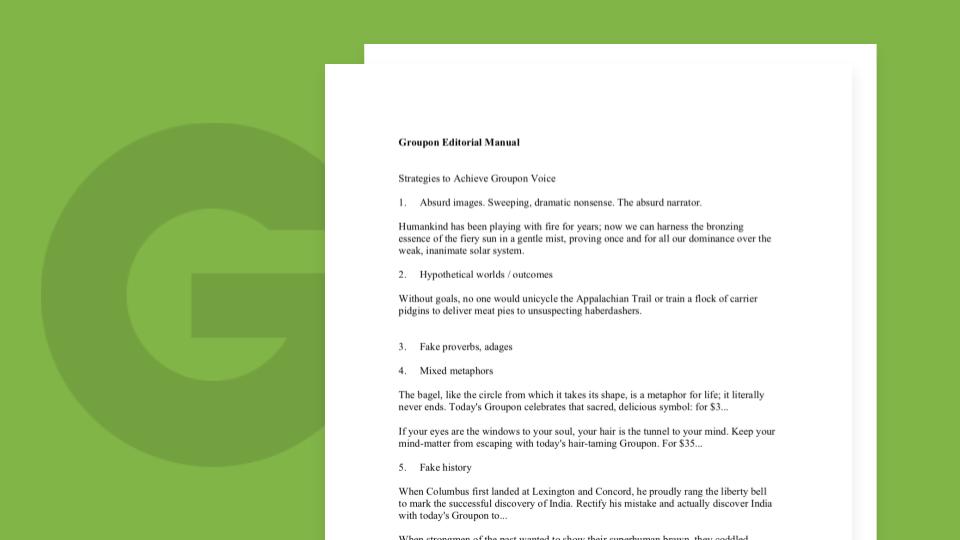A brand can be a fragile thing. Make the wrong move with your customers, and your reputation - your brand - takes a hit.Say the wrong thing on social media today and it could take a massive strike. To say that managing a brand is challenging may be an understatement.
And if you don’t really know your brand, it’s even more frustrating.
How is a business owner or marketing manager supposed to own and hone a brand today?
As with most things, it starts with small steps. Build momentum by doing the basics right, and you can achieve greatness. It’s what most championship teams say. Put in the everyday, utility work and reap the rewards later.
So if you’re looking at your brand and wondering how you can ensure success, you’re in the right place.
We’re going to explore five keys to owning and honing your brand, to help you achieve success in this digital, global, relationship economy.
1. Know Your Brand Identity
Where should you start with your branding? You need a basic brand identity. With just a few very short pieces of content, you can lay the foundation for your entire brand and create something you can confidently build from.
First, let’s define your brand identity as your mission, vision and core values. Most businesses have at least some of this figured out already, or you’ve thought about it in some capacity.
From this foundation, you can begin to shape supplemental materials and the tone of your entire marketing.
Mission
Your mission statement should encapsulate the core of everything you do. The problem is, a lot of companies make it a bigger deal than it needs to be.
You don’t need to spend $10,000 on a mission project and etch it in stone. It can be flexible and simple and should probably not be longer than a sentence.
Focus on defining what you do, as simply as possible. You may also want to include how doing what you do helps your clients.
Think about it this way, if we were each on mountaintops, barely within shouting distance and someone asked you what you do, how would you respond?
Would you say “Our mission is to design garments that redefine the boundaries of interspecies fashion.”
OR
Would you say: “I make pants for bears.”
If we can’t understand your mission, it can’t be effective.
Vision
Just as important as defining what you do is defining why you do it.
What are you working toward? Where are you going? What’s the point of your mission?
Vision is an opportunity for brands to really take on a unique identity. When you have a strong vision that resonates with the beliefs of your customers, their loyalty to your brand will become almost unbreakable.
A great example of an awesome vision statement in action is Patagonia.

This brand makes clothing for outdoor sports done in nature and the core of their mission/vision is to use their business to protect the environment.
Since 1986 they’ve donated 1% of sales or 10% of profits to grassroots environmental groups. They also fund major education campaign on an environmental every year and every 18 months, they host a conference to teach marketing skills to the activists they support.
While your vision might not be that altruistic, it should be a concrete goal, even if it still seems impossible today.
Core Values
Core values are guiding principles for your brand. Think of them as a way to guide your whole company in knowing what you stand for, without having to think about it.
You don’t have to be a big company to benefit from these. Even a small business can use their core values to make everyday decisions on every level. Shoot for around four to six, and make them easily repeatable.

Core values work most effectively when you and your staff keep them top of mind all the time.
And that wraps up your brand identity. A mission statement, what you do; a vision statement, what your purpose is; your core values, what you stand for.
2. Build an Editorial Style
Oftentimes when one of our consultants asks a company if they have an editorial style guide, they say “YES!” and excitedly show off the design specs that came with logo.
Businesses talk about their brand voice but very few realize how much deliberate energy and thought go into good brand messaging.
This isn’t just big TV ads and famous campaigns. This is everything from postcards from your dentist to the sandwich board outside your local bakery. An editorial style guide establishes and defines your strategic brand voice.
Editorial guidelines help to ensure you’re always speaking with a clear, consistent brand voice (no matter who’s at the keyboard). If multiple people write your marketing messages without an editorial style guide, it’s sort of like letting graphic designers recreate your logo from just memory. Every rendition is going to get further and further away from the original.
General Brand Messaging
When creating an editorial style guide, the first thing you need to consider is your general brand messaging. This is a high-level look at your communication goals.
What’s the most important thing that you achieve in your communications? To be educational and helpful? To be a thought leader in your industry?
Or do you want to evoke a specific emotion? Victoria’s Secret, for example, writes to make women feel sexy and powerful. WalMart wants to save them money.
Essentially, define how you want me (the consumer) to view your brand. If you’re unsure on this one, do yourself a favor and ask your sales department. They likely already know what works best.
Tone of Voice
Brand Tone of Voice is where you get into the strategy for achieving your general brand message. You’ve laid it out, now tell me how to get there. Define the exact characteristics your writing should have.
If your goal is to have consumers see you as trusted, honest and friendly, then your tone of voice should tell me to be warm, speak simply, avoid using industry jargon, and come across as conversational. Write less like a brochure and more like old friends talking over coffee.

Groupon does an incredible job of teaching writers how to achieve their very specific brand of humor with examples, and pointers that cover everything from the big picture, all the way down to specific word choice.
The more guidance you provide, the less room people will have for interpretation. And you don’t want interpretation because your goal really is consistency.
Tone of Voice Personification
With Tone of Voice Personification, you essentially describe your brand as if it were a person, in order to understand how it should sound.
It’s a great way to get your C-suite thinking like a marketer. Be careful when you do this that you’re not describing your buyer personas, but the brand itself.
Go through this exercise with as few people as you can. Then list all of the attributes, just like you were filling a dating profile. There’s no right or wrong answer, it’s all just pieces of a puzzle. The more information you decide on, the more clearly you’ll see this vivid picture start to emerge. That mental image is really going to help you understand the way your brand should be sound.
3. Develop a Graphic Standards Guide

Next up for owning and honing your brand is a Graphic Standards Guide.
When separated on their own, the graphic elements that represent a brand come together in a graphic standards guide, also called a brand identity style guide.
Like words and tone of voice, design ensures marketing and advertising is on brand.
A graphic standards guide keeps things looking relatively uniform.
After all, the last thing you want is a great piece of content in the right tone of voice, but then typeset in Comic Sans and flanked by a pixelated version of your beloved logo.
Your Brand’s Logo
The logo is the visual representation of your brand. It should help customers quickly recall you and their emotional connection to your company, the value it brings them, and their experience with it.
To get started, identify the anatomy of your mark (logo) and what makes it unique. Start with the icon and type choice in the logo.
Once you have your logo dialed-in, create rules to maintain integrity and consistency.
Brand Color Palette

Colors help evoke emotion in the viewer. Having your primary and secondary palettes laid out will help you maintain consistency, and help convey the emotions you hope your service and experience promote with customers.
In your graphic standards guide, your rules for the color palette should include how much and when to use. Consistent use of color can be a powerful visual clue for customers with recognizability.
For great examples and more on graphic standards, watch the on-demand video training From Voice to Visuals - Building a Brand.
4. Create a Brand Marketing Strategy
Now that you know how you want to say things, and how you want to look visually, it’s time to decide what to say. Let’s talk Brand Marketing Strategy.
It all starts with a single question.
What are your goals? Are they SMART?
Are we trying to drive leads, brand awareness, sales, event signups? Who do we want to attract? Does our brand voice relate and attract that type of person.
Your goals determine the strategies you’ll use. Then, the strategies need to be have the right brand message to reach your target personas.
An example SMART Goal may be to generate 50 leads for a sailing lessons class in the next 6 months.
Now how are you going to accomplish the goal? It all starts with who we want to target. What type of person is our perfect buyer persona?
How will you reach that target market? If your perfect buyer persona lives on Instagram, create a social strategy the focuses there. If you know they read long form blog content to learn everything they can about sailing, get to work blogging!
 Again, it all starts with your buyer personas: A fictional representation of your perfect customers.
Again, it all starts with your buyer personas: A fictional representation of your perfect customers.
But how do you create one?
Understand your audience = start with the 5 W’s. Who are they, what do they need, where are they looking for answers or hanging out in general, when are they looking to buy, and why would they get to know, like, and trust you.
Add “Style Tips” to your personas, this will help content writers write in the language you want to portray.
At Impulse Creative, we work in the inbound marketing space with most of our clients. So we use strategies like social media, content marketing, and problem solving to help generate leads, sales, awareness, or whatever the client goal is.
A basic place to start is to treat your blog as your marketing hub. [image from presentation slide 36]
Then in social media, engage with your fans. Answer their comments, like their posts. Let them know you are listening. This helps drive awareness and build trust.
Finally, SEO should be an important part of every branding strategy. You need to make sure your company shows up for the right people at the right time. This means using the right keywords to target the right people, through relevant, original content.
Our team suggests using a combination of both on and off page SEO techniques to improve your rankings for the words that matter.
Creating a brand marketing strategy will help you keep your branding on-point and focused.
5. Test, Measure, Iterate
Finally, to continue honing your brand, you have to test, measure, and iterate.
What gets measured, gets improved.

Experienced sales and marketing professionals understand the importance of consistent brand messaging – how you explain what it is that your product does better than every other product. In a marketplace where a lot of auto parts and accessories seem identical, messaging is key.
But the question is, how do you know your messaging works?
You know through various measurements or key performance indicators (KPIs) like social engagement, tracking where traffic comes from, and how it converts.
When your KPIs show growth and positive ROI, your branding and marketing works.
Then, when you find out what works and why, do that more. When you see something that doesn’t work, move on from it.
Also, surveying customers, prospects, and even lost deals (when you can) help you understand how people outside of your business see your brand.
Dive Deeper into Owning and Honing Your Brand
You can watch our on-demand video training From Voice to Visuals - Building a Brand for the full experience of owning and honing your brand.
We all want the polished branding of big companies, but most small and medium-sized businesses haven’t done their homework.
Our training will walk you through your brand creation from start to finish, or allow you to simply review and fill in the blanks of your current brand strategy.

Color palette photo by Kira auf der Heide on Unsplash
Test, measure photo by William Iven on Unsplash
Brand identity photo by Patrik Michalicka on Unsplash




